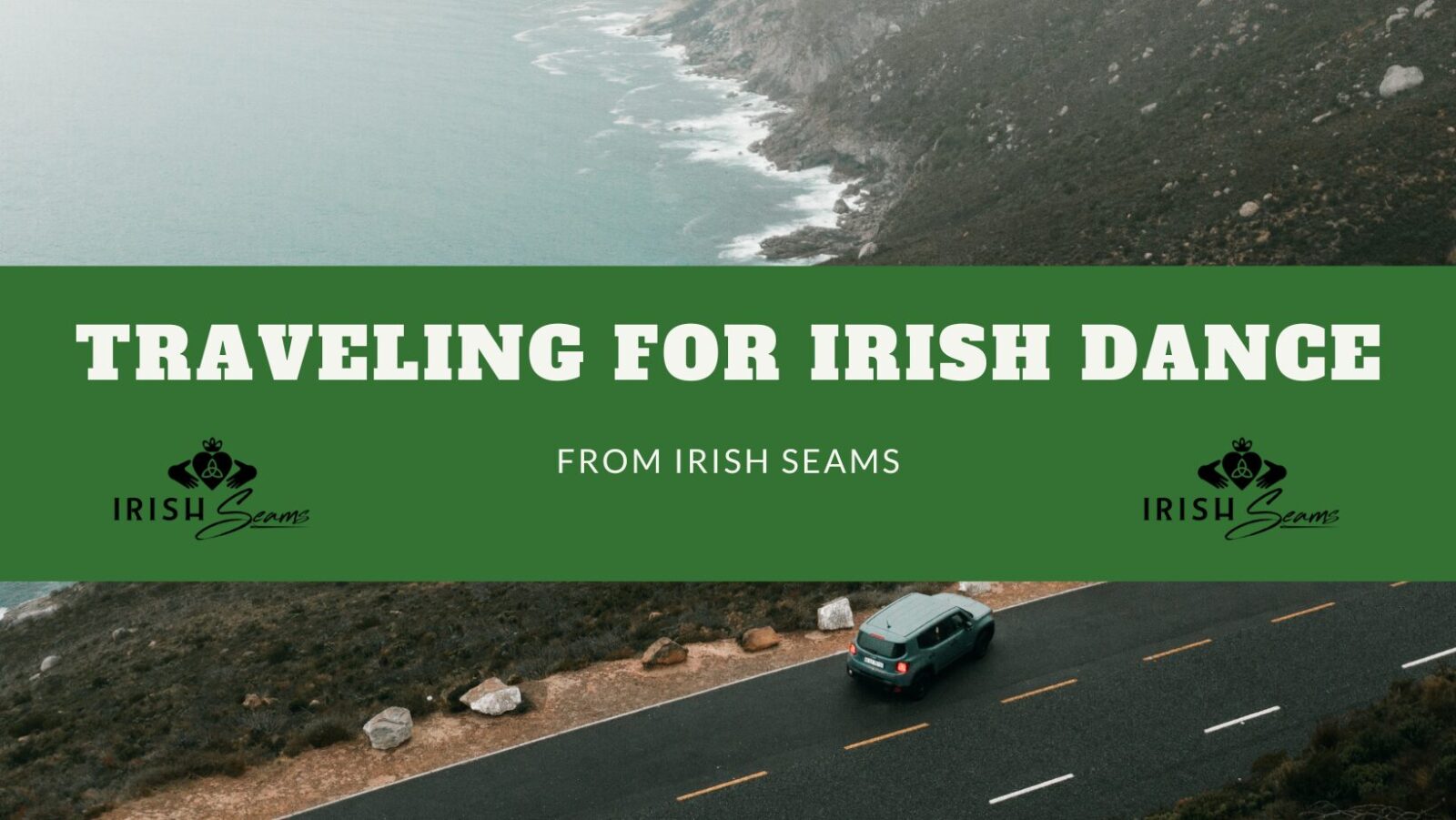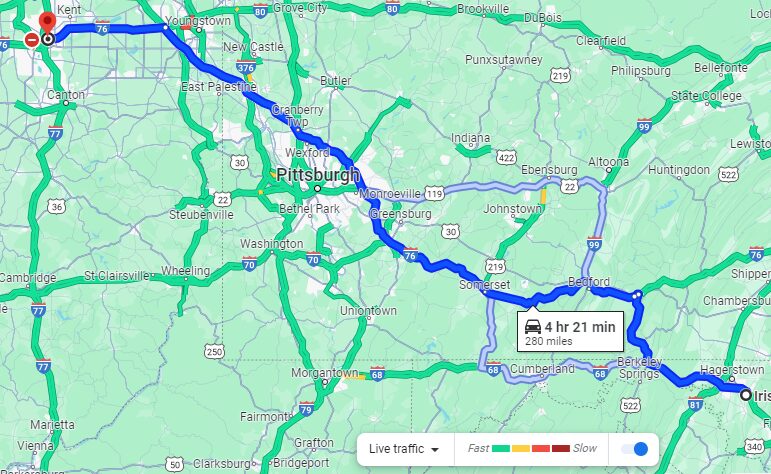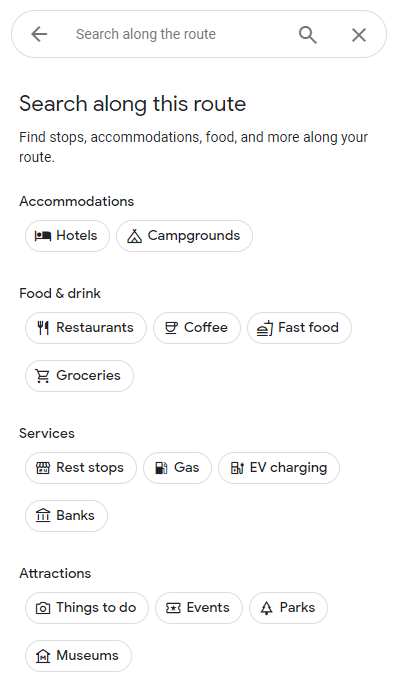
Feising is an important part of Irish dance, and travel is an important part of feising. When you’re just starting out, you will usually be able to just go to competitions in your local area, but as you get more experience and move up into higher categories most people want to attend more feiseanna. A lot of the time that means long-distance travel, because important feiseanna will often be taking place hours away from your hometown- especially major events like Regionals, Nationals, or even Worlds! So how do you make traveling for Irish dance easier?
It’s common for that question to be frustrating or even intimidating at first. Long road trips are expensive, tiring, difficult, and sometimes overwhelming, especially if you’re not used to them. Even if you love to travel, there’s no denying that it can get expensive! To help you out with that, we’ve put together a whole bunch of tips drawn from our years of experience driving to Feiseanna all over the country, both as vendors and attendees. So the next time you hit the Feis trail with six hours of driving ahead of you, here are a few things you can keep in mind to make traveling for Irish dance easier and cheaper:
(Looking for advice on how to save money on hotels? Check out our article here for a whole load of information on that!)
Section 1: Gas Stations And You
The first thing most people consider when they think of finding a gas station is the location, because you don’t want to be driving too far out of your way and making a long trip even longer. Luckily, most direction apps like Google Maps allow you to search for things close to your current route, and many exit signs will list the distance to the nearest amenities.
The second thing most people think about is price, and for good reason. Even a few cents per gallon of difference can add up fast, especially on a long road trip. One thing that can help you find good prices on gas near you is a gas app. There are a few popular ones- such as Gas Buddy, Checkout 51, or Upside- that can do a whole bunch of useful things, from searching for the best gas prices near you to actually offering cash back on gas! These services claim that they can save you as much as 25 cents to the gallon, and while that’s probably rare it’s nothing to sneeze at.
Beyond price differences, some gas stations offer more complete services than others. Travel stops like Pilot, Loves, and Sheetz tend to have clean, large bathrooms, fountain drinks, and a selection of groceries and useful items like charging cables that really come in handy in a pinch. Having a one-stop shop for all your needs is a huge help for long trips. Sheetz especially has pretty good hot food that they make to order for you, and it’s an Irish Seams favorite stop.
Another factor for gas stations is rewards cards. A lot of the larger chains- such as Sheetz, Love’s, and Pilot/Flying J among others- have rewards cards that can get you savings on food, drinks, and even gas at their locations. Sheetz especially lets you save 3 cents a gallon on gas if you swipe your card, which is really nice.
It may seem like we’re talking up Sheetz a lot. There’s not a brand deal or partnership or anything behind that, but there is a Sheetz almost right next to our store, so we end up going there for gas pretty regularly. Speaking from our experience, Love’s and Pilot/Flying J are more common than Sheetz, which only show up in 6 states. Pilot/Flying J shows up in 44 states, while Love’s has locations in 42.
We do recommend that you top off every time you stop at a gas station- it seems paranoid, we know, but you never want to be looking for gas when the E light is on and children are screaming in the back seat. In general, you should try to stop every two or three hours just to get out of the car and stretch your legs- your muscles will thank you at the end!
Section 2: Traffic and Route Planning Tools
Traffic is sadly unavoidable, especially when you’re going in and out of big cities which is where a lot of feis venues are. Google Maps, Waze, and similar programs are pretty decent at helping you avoid really serious traffic jams where possible- it’s better than it used to be, where you would just run into a four-hour stop due to a big accident ten miles up the road. However, there are still some things you can do to try and limit the effects of traffic on your travel plans!
Firstly, if it’s a long trip you may want to take advantage of Google Maps beyond just putting in your destination when you get in the car. The desktop browser version of Google Maps has a large suite of tools to help you plan out long trips ahead of time! Here are a few of the more useful ones to make traveling easier:
Typical Traffic: If you’re on your computer, you can actually change whether Google is showing you live traffic- as in, the current situation on the road- or typical traffic, such as how busy the road usually is at 5 o’clock on Mondays. This can be an amazingly useful feature for planning out when it would be best to get on the road because if you’re checking the route late at night or early in the morning the live traffic probably won’t reflect what road conditions will actually be like.
Adding Stops: Once you’ve picked a route, Google Maps has a whole selection of buttons to search for common needs along your route- the most important being gas, food, and hotels. You can pre-plan good places to stop and stretch before you even leave the house and then send the full route to your phone number so you don’t lose a single stop. It may seem like a small thing now, but it can be very demoralizing to get in the car and see a big red 13 HOURS in the trip estimate. So pick out waypoints ahead of time, and save yourself that little bit of despair on the morning of the big trip.
Planning for Tolls: Google can also estimate how much the tolls are on your route- and even calculate routes with no tolls if you go into the settings. Going without tolls is almost always a longer route that’s a bit off the beaten trail, but if you have the time and pre-plan good stopping points you might want to consider it. But if you’d rather save time by just paying the tolls, google will at least prepare you for how much it will be. Do keep in mind that most toll stations are almost exclusively using EZ-pass and other electronic methods rather than change or card, and you can actually get a discount at many of them if you use an EZ-pass. If you know your average gas mileage, you can also Google Maps to calculate the difference in miles and figure out if you’re actually saving money avoiding tolls with the extra gas cast.
When Things Go Wrong: What should you do if you find yourself in a real nasty jam anyway? Well, preparation can be the difference between a bit of misery and a real nightmare. Always have snacks and water in the car! No one wants to be hungry and dehydrated in the middle of a major traffic jam! Bring music or maybe a movie to watch or a book to read as well, especially for the kids in the car- we’ll get into that in more depth later. Also, it can be worth printing out your route information ahead of time, so that if your phone dies, loses signal, or decides to update you’ll still be able to navigate.
Finally, there are bathroom breaks. Now hang on, don’t cringe yet! Normally you just stop when you need to go, and hopefully in time all of the kids learn to go when you’re at a stop and not thirty minutes after you leave. Taking extra care to make sure everyone goes to the bathroom every time you stop is Very Important for long trips. But sometimes disaster strikes and you find yourself in the middle lane of an interstate full of cars that haven’t moved in twenty minutes and someone really has to go.
There’s no way to handle this that leaves everyone feeling good about it, and we don’t have much advice. All we can suggest is that you make sure you have some sort of solution so no one wets themselves in the car. Here is our suggestion for if you get stuck and can get to the side of the road, which we have thankfully not had to use.
Pull way off the road, or up onto the exit ramp if possible. Open both of the doors on the side away from traffic to create a little cubicle and then crack their windows open. Stick a beach towel or blanket into the windows and close them to hold it up as a sort of cover for the outside wall. YouTube has a large number of tutorials on how to make these portable potties and dispose of the waste. If you’re traveling with small children or others who may suffer from incontinence, make yourself a potty kit and keep it in the car.
You might never need it. You might be extremely glad you thought ahead. There’s no downside.
Section 3: Entertainment Made Easy
In-car entertainment is essential for any long road trip. It can be the only thing between you and the soul-crushing boredom of an empty highway with nothing but flat land on either side of you for miles. That sort of sight is beautiful, don’t get us wrong, but there does tend to be a lot of it that looks a lot like all the rest. Here are a few of the more common forms of in-car entertainment and some pros and cons for each to make the trip easier for you:
Music: The classic. Great for the driver, especially if you have a pre-made, downloaded playlist and don’t need to worry about messing with radio stations. Any audio-based entertainment can be a point of contention for those with different tastes, so consider bringing headphones or earbuds along for the passengers to listen to their own selections- not the driver, though, that’s not exactly safe.
Audiobooks: Another great choice that’s been gaining popularity in the last few years. The Irish Seams team used to listen to audiobooks on the way to and from dance classes and feis long before BJ even started doing alterations. Can be a little more distracting for the driver than music though, so be careful. Certain stores, like Cracker Barrel, also have programs where you can rent an audiobook at one location and return it at another once you’re finished, which is great for road trips.
Podcasts: very similar to Audiobooks, podcasts are a great modern counterpart to talk radio stations and make great road trip entertainment.
Movies and Shows: we recommend that any movies or videos be confined to the back seat where the driver can’t see the screen. They can be great entertainment for those passengers, especially younger kids, but up front they’re a bit risky. Whatever you’re watching, make sure that it will last until your next stop or that you have someone who can change to the next video easily!
Books: an underrated classic! Books are an awesome choice for passengers, though obviously never the driver. Some people do get motion sickness trying to read in the car, though, so keep an eye on that. Reading on a tablet can be easier at night, though the light can be distracting for the driver.
Instruments: We strongly recommend you confiscate all tin whistles, drums, and kazoos before the trip begins. One of the team learned how to play the song Saint Patrick’s Day on a tin whistle in the car during a five-hour drive to a feis and the rest of us still wake up screaming sometimes.
Travel Games: Less popular nowadays due to phones and tablets, but old-school travel games like I Spy, Auto Bingo, and 20 Questions can still save the day in a pinch. There are also some auto plazas and shops, such as Cracker Barrel, that also sell travel board games like chess or checkers where the pieces and board are magnetized so they don’t fly around constantly.
Snacks: We brought this up earlier, but we’re doing it again because it is so important. Have snacks. It doesn’t need to be anything elaborate, but sacrificing a packet of crackers to a grumpy toddler can completely save a long car ride! Granola bars, fruits, baggies of carrot sticks or nuts- little single-serving packets of less-messy food you can eat in the car can work absolute miracles for raising morale!
One last tip: Don’t rely on streaming for your entertainment options if you can help it. Traveling around the country to feis, you never know when you’re going to be somewhere that just doesn’t have good internet. So we advise that you have at least some of your entertainment downloaded or otherwise available offline before you begin. Streaming is definitely way more convenient, but it’s still worth having a backup.
Those are our main tips for surviving long trips in a car. There are other options for long-distance travel, such as planes and potentially trains, though. We have more experience with driving a long way, but planes and trains each have their own pros and cons.
With airplanes, if you’re flying anywhere domestic you are probably only going to be in transit for one very full day. However, you’re going to have a lot more restrictions on how much you can bring, and Irish dance gear can be bulky and heavy at the best of times. This is not to mention needing to get from the airport to your hotel and then to the venue. Depending on the time of year and how far you’re going plane tickets can actually be a lot cheaper than driving, though.
Trains can be a good option, but they take longer than planes and they don’t have nearly as much coverage. They also have luggage restrictions to keep in mind and the same issue with needing to secure a ride around town once you arrive.
How do you prefer to travel to Feiseanna? Are there any tips and tricks you use that we didn’t mention? Tell us about your favorite road trip survival strategies and in-car entertainment on our Facebook page, and we’ll see you on the feis trail!


